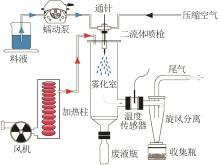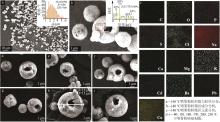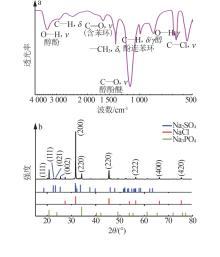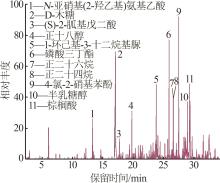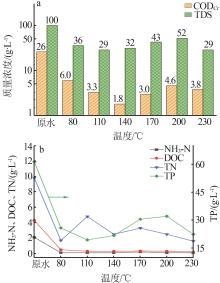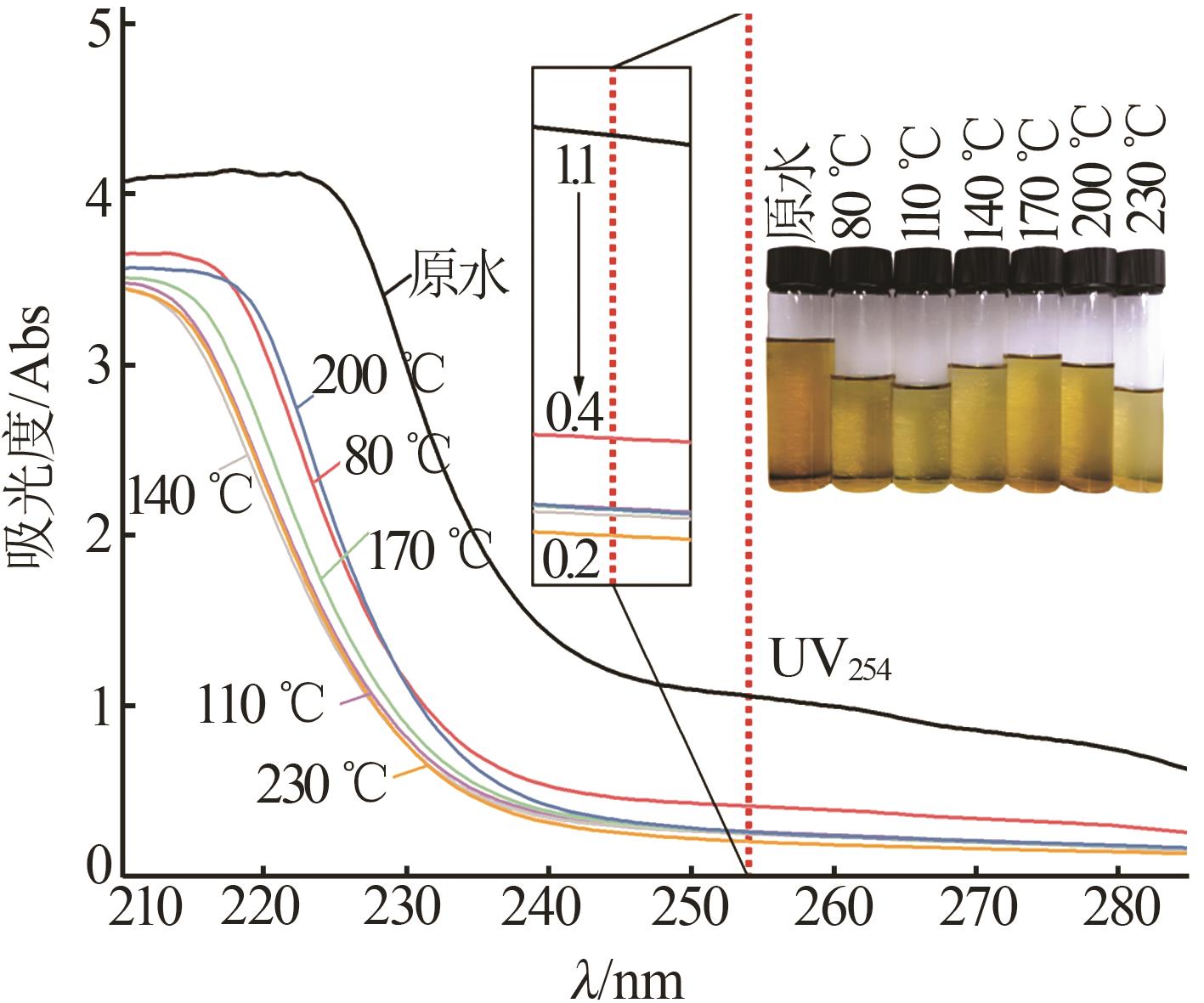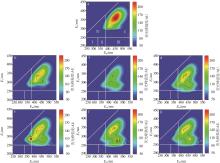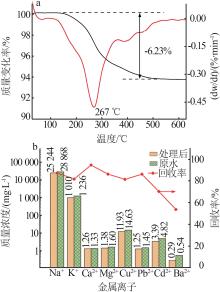Inorganic Chemicals Industry ›› 2024, Vol. 56 ›› Issue (8): 83-91.doi: 10.19964/j.issn.1006-4990.2023-0551
• Environment·Health·Safety • Previous Articles Next Articles
Study on application of spray⁃drying method in inorganic salt recovery and organic matter decomposition in high salt organic wastewater
YUAN Yaosen1( ), LI Enze1(
), LI Enze1( ), LÜ Hongzhou1, SONG Yipeng2, YANG Chengli3, LI Juanjuan3
), LÜ Hongzhou1, SONG Yipeng2, YANG Chengli3, LI Juanjuan3
- 1.Shanxi University,Taiyuan 030006,China
2.Shanxi Taiyuan Solid Waste Disposal Center(Co. ,Ltd. ),Taiyuan 030100,China
3.Shanxi Dadi Ecological Environment Technology ResearchInstitute Co. ,Ltd. ,Taiyuan 030006,China
-
Received:2023-11-20Online:2024-08-10Published:2024-09-26 -
Contact:LI Enze E-mail:3302668261@qq.com;lienze@sxu.edu.cn
CLC Number:
Cite this article
YUAN Yaosen, LI Enze, LÜ Hongzhou, SONG Yipeng, YANG Chengli, LI Juanjuan. Study on application of spray⁃drying method in inorganic salt recovery and organic matter decomposition in high salt organic wastewater[J]. Inorganic Chemicals Industry, 2024, 56(8): 83-91.
share this article
| 1 | 高博.2022年《中国水资源公报》发布[J].水利科学与寒区工程,2023,6(6):2. |
| GAO Bo.China Water Resources Bulletin was released in 2022[J].Hydro Science and Cold Zone Engineering,2023,6(6):2. | |
| 2 | 牟思宇,谢宇斌,杨箫滢.我国固体废物利用处置现状与对策研究[J].有色金属(冶炼部分),2023(9):1-10. |
| MOU Siyu, XIE Yubin, YANG Xiaoying.Research on current situation and countermeasures of solid waste utilization and disposal in China[J].Nonferrous Metals(Extractive Metallurgy),2023(9):1-10. | |
| 3 | ZHAO Yiyi, ZHUANG Xuming, AHMAD S,et al.Biotreatment of high⁃salinity wastewater:Current methods and future directions[J].World Journal of Microbiology and Biotechnology,2020,36(3): 37. |
| 4 | CAPODICI M, COSENZA A, DI BELLA G,et al.High salinity wastewater treatment by membrane bioreactors[M]//Current Developments in Biotechnology and Bioengineering.Amsterdam:Elsevier,2020:177-204. |
| 5 | 李柄缘,刘光全,王莹,等.高盐废水的形成及其处理技术进 展[J].化工进展,2014,33(2):493-497,515. |
| LI Bingyuan, LIU Guangquan, WANG Ying,et al.Formation and treatment of high⁃salt wastewater[J].Chemical Industry and Engineering Progress,2014,33(2):493-497,515. | |
| 6 | 刘春红,王毅,孙伟钢,等.煤化工废水的盐分对两种高级氧化技术的影响试验研究[J].水处理技术,2023,49(11):136-141. |
| LIU Chunhong, WANG Yi, SUN Weigang,et al.Experimental study on the influence of salinity of coal chemical wastewater on two advanced oxidation technologies[J].Technology of Water Trea⁃ | |
| tment,2023,49(11):136-141. | |
| 7 | 王伟伟,唐鸿志,许平.嗜盐菌耐盐机制相关基因的研究进 展[J].微生物学通报,2015,42(3):550-558. |
| WANG Weiwei, TANG Hongzhi, XU Ping.Salt⁃tolerance related genes in halophilic bacteria and Archaea[J].Microbiology China,2015,42(3):550-558. | |
| 8 | KARTAL B, KOLEVA M, ARSOV R,et al.Adaptation of a freshwater anammox population to high salinity wastewater[J].Journal of Biotechnology,2006,126(4):546-553. |
| 9 | DU Shaofu, ZHAO Peng, WANG Lingfeng,et al.Progresses of advanced anti⁃fouling membrane and membrane processes for high salinity wastewater treatment[J].Results in Engineering,2023,17:100995. |
| 10 | 赛世杰.纳滤膜在高盐废水零排放领域的分盐性能研究[J].工业水处理,2017,37(9):75-78. |
| Shijie SAI.Research on the salt separation performance of nano⁃filtration membrane in high salinity wastewater zero discharge field[J].Industrial Water Treatment,2017,37(9):75-78. | |
| 11 | CAI Weiwei, ZHANG Jingyu, LI Yan,et al.Characterizing membrane fouling formation during ultrafiltration of high⁃salinity organic wastewater[J].Chemosphere,2022,287:132057. |
| 12 | DAHMARDEH H, AKHLAGHI AMIRI H A, NOWEE S M.Evaluation of mechanical vapor recompression crystallization process for treatment of high salinity wastewater[J].Chemical Engineering and Processing:Process Intensification,2019,145:107682. |
| 13 | LI Yahui, ZHANG Xiaofei, WANG Yilin,et al.Feasibility study of multi⁃effect distillation dealing with high⁃salinity organic RO concentrates:Experiment and theoretical analysis[J].Desalination,2021,505:115007. |
| 14 | 王宇峰,俞言文,杨尚源,等.铁碳微电解耦合芬顿高级氧化技术对高盐废水COD去除性能的影响研究[J].水处理技术,2017,43(6):65-67. |
| WANG Yufeng, YU Yanwen, YANG Shangyuan,et al.Effect of iron⁃carbon micro⁃electrolysis coupled with fenton oxidation technology on COD removal performance in high salinity wastewat⁃ | |
| er[J].Technology of Water Treatment,2017,43(6):65-67. | |
| 15 | WEI Jucai, SHI Lin, WU Xu.Electrochemical advanced oxidation process with simultaneous persulfate and hydrogen peroxide on⁃site generations for high salinity wastewater[J].Separation and Purification Technology,2023,310:123147. |
| 16 | 陈静.超声喷雾法制备多孔/空心稀土荧光粉及性能研究[D].杭州:浙江理工大学,2021. |
| CHEN Jing.Preparation of porous/hollow rare earth phosphors by ultrasonic spray method and their luminescent properties[D].Hangzhou:Zhejiang Sci-Tech University,2021. | |
| 17 | TSAY J D, FANG T T.Effects of molar ratio of citric acid to cations and of pH value on the formation and thermal⁃decomposition behavior of Barium titanium citrate[J].Journal of the American Ceramic Society,1999,82(6):1409-1415. |
| 18 | YU Mengkang, SUN Yixuan, DU Haoran,et al.Hollow porous carbon spheres doped with a low content of Co3O4 as anode materials for high performance lithium⁃ion batteries[J].Electrochimica Acta,2019,317:562-569. |
| 19 | ZHANG Mao, QIAN Xiang, ZENG Qingwen,et al.Hollow microspheres of polypyrrole/magnetite/carbon nanotubes by spray⁃dry as an electromagnetic synergistic microwave absorber[J].Carbon,2021,175:499-508. |
| 20 | AGHAALI M H, FIROOZI S.Synthesis of nanostructured fcc/hcp hollow Ni particles by ultrasonic spray pyrolysis and its dry reforming catalytic properties[J].Powder Technology,2019,356:119-128. |
| 21 | SHIH S J, CHOU Y J, HADUSH A,et al.Morphology control of Eu-doped amorphous gehlenite phosphors prepared by spray pyrolysis[J].Journal of Nanoscience and Nanotechnology,2018,18(8):5849-5853. |
| 22 | 伍银爱,肖裕泽,陈灿,等.三维荧光光谱技术在不明固体废物溯源的应用研究[J].环境科技,2023,36(5):52-58. |
| WU Yin′ai, XIAO Yuze, CHEN Can,et al.Source tracing method for unknown solid waste based on three⁃dimensional excitation emission matrix flourescence spectroscopy[J].Environmental Sci⁃ | |
| ence and Technology,2023,36(5):52-58. | |
| 23 | 何伟,白泽琳,李一龙,等.溶解性有机质特性分析与来源解析的研究进展[J].环境科学学报,2016,36(2):359-372. |
| HE Wei, BAI Zelin, LI Yilong,et al.Advances in the characteristics analysis and source identification of the dissolved organic matter[J].Acta Scientiae Circumstantiae,2016,36(2):359-372. | |
| 24 | 高洁,江韬,李璐璐,等.三峡库区消落带土壤中溶解性有机质(DOM)吸收及荧光光谱特征[J].环境科学,2015,36(1):151-162. |
| GAO Jie, JIANG Tao, LI Lulu,et al.Ultraviolet⁃visible(UV-vis) and fluorescence spectral characteristics of dissolved organic matter(DOM) in soils of water⁃level fluctuation zones of the Three Gorges Reservoir Region[J].Environmental Science,2015, 36(1):151-162. | |
| 25 | WEISHAAR J L, AIKEN G R, BERGAMASCHI B A,et al.Evaluation of specific ultraviolet absorbance as an indicator of the chemical composition and reactivity of dissolved organic carbon[J].Environmental Science & Technology,2003,37(20):4702-4708. |
| 26 | CHEN Jie, LEBOEUF E J, DAI Sheng,et al.Fluorescence spectroscopic studies of natural organic matter fractions[J].Chemosphere,2003,50(5):639-647. |
| 27 | CHEN Wen, WESTERHOFF P, LEENHEER J A,et al.Fluorescence excitation⁃emission matrix regional integration to quantify spectra for dissolved organic matter[J].Environmental Science & Technology,2003,37(24):5701-5710. |
| 28 | YANG Guang, PAN Hongwei, LEI Hongjun,et al.Dissolved organic matter evolution and straw decomposition rate characterization under different water and fertilizer conditions based on three⁃dimensional fluorescence spectrum and deep learning[J].Journal of Environmental Management,2023,344:118537. |
| 29 | KOWALCZUK P, STOŃ-EGIERT J, COOPER W J,et al.Characterization of chromophoric dissolved organic matter(CDOM) in the Baltic Sea by excitation emission matrix fluorescence spectroscopy[J].Marine Chemistry,2005,96(3/4):273-292. |
| 30 | 杨臣强,杨瑞,于玉洁,等.基于三维荧光光谱-平行因子分析及紫外-可见吸收光谱对制药污水不同处理工艺单元溶解性有机物特征分析[J].环境工程学报,2023,17(10):3444-3453. |
| YANG Chenqiang, YANG Rui, YU Yujie,et al.Characterization of dissolved organic matter in pharmaceutical wastewater treatment process units based on three⁃dimensional fluorescence sp⁃ | |
| ectroscopy⁃parallel factor analysis and ultraviolet⁃visible absorption spectroscopy[J].Chinese Journal of Environmental Engineering,2023,17(10):3444-3453. | |
| 31 | 朱光泽,周炜,夏志东,等.有机废弃物热解分析技术现状与展望[J].中国塑料,2023,37(11):101-116. |
| ZHU Guangze, ZHOU Wei, XIA Zhidong,et al.Current situation and prospect of pyrolysis analysis technology of organic wast⁃ | |
| es[J].China Plastics,2023,37(11):101-116. | |
| 上接第 53 页) | |
| environmental friendly complexing agent and oxidant on CMP of aluminium alloy under low pressure[J].Diamond & Abrasives Engineering,2020,40(1):74-78. | |
| 32 | LI Mengqi, SUN Ming, MA Zhongchen.Study on removal rate and mechanism of copper CMP by complexing agent[J].Applied Che⁃ mical Industry,2023,52(01):34-38. |
| 33 | 杨云点,王胜利,王辰伟,等.不同络合剂与pH对钴CMP去除速率的影响[J].半导体技术,2020,45(7):543-549. |
| YANG Yundian, WANG Shengli, WANG Chenwei,et al.Effects of different complexing agents and pH values on cobalt removal rate in CMP[J].Semiconductor Technology,2020,45(7):543- 549. | |
| 34 | CHEN Guomei, DU Chunkuan, NI Zifeng,et al.Effect of complexing agent on chemical⁃mechanical polishing of 316L stainless steel[J].Diamond and Abrasives Engineering,2022,42(6):753-759. |
| 35 | 熊伟,白林山,储向峰,等.络合剂对蓝宝石晶片化学机械抛光的影响[J].机械科学与技术,2014,33(7):1027-1030. |
| XIONG Wei, BAI Linshan, CHU Xiangfeng,et al.Effect of chelating agent on chemical mechanical polishing quality of sapphi⁃ | |
| re[J].Mechanical Science and Technology for Aerospace Engineering,2014,33(7):1027-1030. | |
| 36 | LIU Jinwei, JIANG Liang, WU Hanqiang,et al.Performance of carboxyl groups in chemical mechanical polishing of GCr15 bearing steel:Effects of carbon chain length and pH[J].Tribology Letters,2021,69(4):161. |
| 37 | ZHOU Jiakai, NIU Xinhuan, YANG Chenghui,et al.Surface action mechanism and planarization effect of sarcosine as an auxiliary complexing agent in copper film chemical mechanical polishing[J].Applied Surface Science,2020,529:147109. |
| 38 | ZHANG Lifei, LU Xinchun, BUSNAINA A A.The role of carboxylic acids on nanoparticle removal in post CMP cleaning process for cobalt interconnects[J].Materials Chemistry and Physics,2022,275:125199. |
| 39 | LI Tao, SUN Haoyang, WANG Daiqi,et al.High⁃performance chemical mechanical polishing slurry for aluminum alloy using hybrid abrasives of zirconium phosphate and alumina[J].Applied Surface Science,2021,537:147859. |
| 40 | HELAL N H, BADAWY W A.Environmentally safe corrosion inhibition of Mg-Al-Zn alloy in chloride free neutral solutions by amino acids[J].Electrochimica Acta,2011,56(19):6581- 6587. |
| [1] | HUANG Tianyin, SUN Ling, ZHAO Qinzheng, CHEN Xin, SONG Xiaojie, WU Bingdang. Study on performance and mechanism of titanium salt coagulant for treatment of oily wastewater [J]. Inorganic Chemicals Industry, 2025, 57(2): 68-75. |
| [2] | MA Yihong, CHEN Xingtao, TANG Lei. Treatment of printing wastewater by chemical coagulation-TiO2/g-C3N5 photocatalytic degradation [J]. Inorganic Chemicals Industry, 2024, 56(10): 151-158. |
| [3] | WANG Wei, LI Wei, LI Limin, LIU Dongxu. Study on pretreatment of iron phosphate production wastewater reuse and zero discharge [J]. Inorganic Chemicals Industry, 2024, 56(8): 99-103. |
| [4] | ZHU Zuoqiao, SHI Mengyuan, MAO Rui, GUO Haining, SU Yuao. Study on treatment process of metallurgical fluorine-containing wastewater by coagulant sedimentation method [J]. Inorganic Chemicals Industry, 2024, 56(4): 118-124. |
| [5] | YANG Bin, LI Yinyue, DONG Mingkun, HAN Ximeng, GUI Xin, ZHANG Fawen. Treatment effect and flocculation mechanism of abandoned drilling mud by different flocculants [J]. Inorganic Chemicals Industry, 2024, 56(4): 34-41. |
| [6] | HE Yipeng, XIONG Chenxi, WANG Yiping, LI Jun, JIN Yang. Research on preparation of iron-based organic metal-organic framework at room temperature for adsorption of trivalent arsenic [J]. Inorganic Chemicals Industry, 2024, 56(2): 111-120. |
| [7] | WEI Tianshun, JI Lijun, SHENG Yong, CHEN Kui, WU Yanyang, WU Bin. Study on fractional crystallization process of ammonium sulfate and sodium sulfate in high salt wastewater [J]. Inorganic Chemicals Industry, 2024, 56(1): 102-106. |
| [8] | TANG Yifu, CAO Changchun, LÜ Peng. Study on adsorption of cadmium-humic acid by hydroxyiron oxide [J]. Inorganic Chemicals Industry, 2023, 55(8): 124-131. |
| [9] | ZHANG Chenhu, MA Yi, ZHU Shan, CHEN Peng, WANG Chengyong, LI Ziwen. Study on adsorption of heavy metal ions in mineral processing wastewater by chelating modified coal gangue [J]. Inorganic Chemicals Industry, 2023, 55(4): 97-103. |
| [10] | JIN Suna, LÜ Ruiliang. Research and application progress of wet flue gas desulfurization wastewater treatment technology [J]. Inorganic Chemicals Industry, 2023, 55(4): 27-37. |
| [11] | QIU Liping,ZHANG Xiaofeng. Research and application progress of high-salt wastewater treatment technology [J]. Inorganic Chemicals Industry, 2023, 55(2): 1-9. |
| [12] | FANG Weicheng,CHENG Xingxing,SUN Changrong. Optimization of preparation of sludge/fly ash composite ceramsite filler materials by response surface methodology [J]. Inorganic Chemicals Industry, 2022, 54(9): 119-125. |
| [13] | ZHOU Weifeng,CHI Yongzhi,LI Kaixiong,TIAN Sufeng,LIU Muzhi. Study on removal of salts from MVR condensate wastewater in the hydrometallurgical industry by ion exchange method [J]. Inorganic Chemicals Industry, 2022, 54(4): 152-158. |
| [14] | Lei Shaocheng,Li Yulin. Experimental study on salt separation of high salt wastewater from coal chemical HERO by DTNF nanofiltration membrane [J]. Inorganic Chemicals Industry, 2020, 52(9): 84-87. |
| [15] | Miao Junkui,Yu Yueqin. Study on a new calcification process using Ca(OH)2 as calcification agent in seaweed chemical industry [J]. Inorganic Chemicals Industry, 2020, 52(9): 37-42. |
| Viewed | ||||||
|
Full text |
|
|||||
|
Abstract |
|
|||||
|
||
